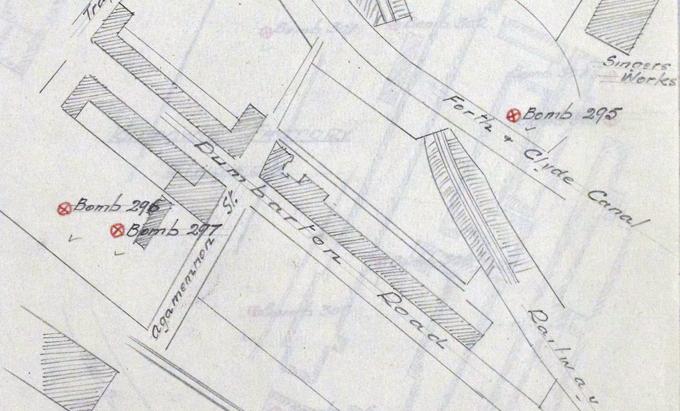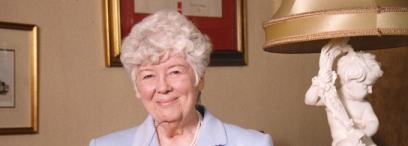The latest release of Scottish marriage records provides online access to 47,716 marriage entries for 1941. The year 1941 was the second full year of Scotland’s involvement in World War Two. Many families were separated for long periods of time as men fought in the conflict and women helped with the war effort at home. Although there were fewer marriages, many couples continued to get married.
One couple who married early in 1941 was Alexander Clarkson and Margaret O’Donnell. Alexander was a widowed engineer’s machineman. On 27 June 1919 he married his first wife, Annie May Preston, in the parish of Old Kilpatrick. They lived together until 1932, when, on 5 July, Annie died at the Maternity Hospital, Glasgow, from septicaemia following childbirth.
Nine years later, Alexander had met Margaret O’Donnell, a 29 year old cook and the daughter of John O’Donnell, an electrician, and Ellen O’Donnell. The couple were married on 12 February 1941 in a civil ceremony by the Registrar in the district of Old Kilpatrick.

Marriage entry of Alexander Clarkson and Margaret O’Donnell, 12 February 1941
National Records of Scotland, Statutory Register of Marriages, 1941, 501/82
Alexander was living at the Benbow Hotel, in Dalmuir, when he married Margaret, and they settled there together. The hotel had been opened on 21 May 1916 by William Beardmore & Company Limited to meet the pressing need for accommodation for single and married workers at their Dalmuir works, but also more generally in the burgh of Clydebank. The hotel had 386 bedrooms, a public saloon, a restaurant for 1000 diners, as well as billiard, recreation, reading and writing rooms (Sunday Post, 21 May 1916).
After only a month of married life together, tragedy struck for Alexander and Margaret. On the evening of 13 and 14 March 1941, the town of Clydebank was largely destroyed by Luftwaffe air raids aimed at shipyards, munitions and engineering works; 439 bombers dropped over 1,000 bombs, resulting in the deaths of 528 people. Hundreds more were seriously injured and thousands of buildings were destroyed in the attack. Amongst these buildings, was the Benbow Hotel, where Alexander and Margaret were resident. The hotel was hit by a bomb on the evening of 13 March, leaving only its shell.
There was barely one street that hadn’t suffered a loss of life or a damaged building, and news spread quickly of the destruction the area had sustained. I M M MacPhail describes how, following the bombing, a rumour spread that over a hundred residents of the hotel had died. In reality, five of the boarders had suffered fatal injuries (‘The Clydebank Blitz', Glasgow, 1974, page 25).

Map showing the position of the two bombs dropped near the Benbow Hotel on Agamemnon Street.
Record of High Explosive and Incendiary Bombs, National Records of Scotland, HH50/162/159
Sadly, Margaret was amongst those found dead during a search of the site of the hotel on 14 March. The Statutory Register of Deaths grimly lists the cause of death as ‘due to war operations.’ Only one month and a day after Alexander married Margaret, he lost his wife and his home.

Death entry for Margaret Clarkson, 14 March 1941
National Records of Scotland, Statutory Register of Marriages, 1941, 501/267
One other woman and three male boarders from the hotel died as a result of the Clydebank Blitz. Agnes Mealyea, a 50 year old sewing machine factory worker was injured at the hotel, but died on 15 March at the Blawarthill Hospital in Glasgow. The three men were not so quickly identified. David McNamarra was registered in April 1941 as having died in March 1941 as a result of ‘war operations’ on the information of the Town Clerk Depute. The remains of James Dunleavy, a 54 year old wood polisher, weren’t discovered until 9 April at what had been the warden’s post on Janetta Street. The death of Alexander Blair McLennan, a 63 year old engine fitter, wasn’t registered until 30 September 1943 on information from the Procurator Fiscal.
As a result of the bombings, and the forced evacuation of thousands of residents, the number of marriages held in the parish of Old Kilpatrick fell during 1941. The year 1940 had seen 1,173 marriages registered in the parish; this fell to 869 in 1941 and again to 670 by 1943. It was only after the end of the war that numbers stabilized and began to climb, reaching 943 entries in 1948.
Learn more about the Clydebank Blitz and wartime marriages through the ScotlandsPeople and National Records of Scotland websites.


